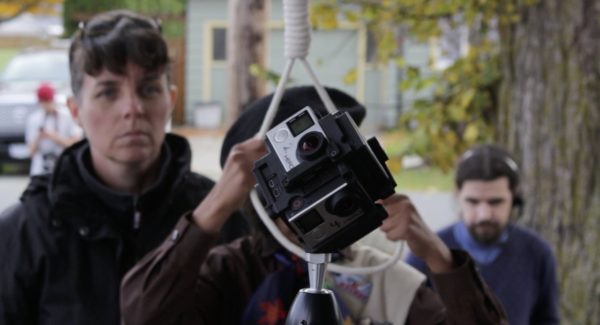It is difficult to narrow down the best technology releases in 2017 because of how much progress was made across many industries. However, here are five technologies that have the potential to personally impact our daily lives in 2018.
Smart Home Tech
Talking to your house is no longer science fiction after 2017 saw the rise and popuralization of the Google Home and Amazon Echo. These devices are capable of playing music on demand, controlling your house’s lighting, answering simple questions, carrying a conversation, and more.
These smart home assistants work best in conjunction with other tech such as Philips Hue Bulbs that allow you to control lighting and Ecobee’s smart thermostat that controls a room’s temperature. There are even smart home locks that track people who enter and leave, and security cameras with live streaming, two-way audio, and motion detection.
In the kitchen, there are smart ovens that detect and identify the food you put in, and smart refrigerators that can keep track of how many eggs are left and if the milk is half-empty.
Virtual Reality (VR) and Augmented Reality (AR)
We’ve already heard about the HTC Vive and Occulus Rift making waves in the gaming industry in 2016. But, this year brought it to a whole other level with Samsung and Google releasing more affordable and accessible VR headsets.
The latest Google Daydream View rings in at only $140 while the Samsung Gear VR follows closely at $200. These headsets require strapping your smartphone right onto them to run the VR display and support a myriad of games, movies, videos, and virtual environments.
Augmented reality (AR) is the idea of seamlessly merging virtual content and real-time reality by superimposing computer images (or holograms) onto the user’s real world view. AR made its debut this year with Microsoft’s Hololens. The Hololens is an AR headset that allows you to interact with generated holograms in the existing world around you. The only limit to the applications of this tech is our imagination.

(Left to right) Maureen Bradley, Aisha Haq, and Adrian Southin test their VR camera while
shooting Knot for Sale. Photo provided by Brendan Thomas Lee
Self-Driving Vehicles
Self-driving vehicles made leaps and bounds of progress in 2017 — all while under the scrutinizing eyes of governments and the public. There are many cars already out in public, which include self-driving features like adaptive cruise control, automatic forward-collision braking, automatic parking, and lane-keeping assistance. These features are already so common that even my mother’s car parallel parks itself.
Right now, the closest we can get to a full driverless experience with cars on the market is Tesla’s Autopilot. This system that is built into Tesla cars (almost) fully drives the vehicle while the driver keeps their hands on the wheel for backup. While at a developmental stage, Google’s fully self-driving car, Waymo, is taking early riders for its trial program in Arizona.
However, the biggest breakthrough for driverless tech though was not even technological — it was legislative. Last September, the U.S. Department of Transportation released federal guidance for automated driving systems that will largely influence future self-driving legislation. The results of this will be first, apparent with Tesla’s driverless semi-trucks that are predicted to take away 300 000 jobs from the industry within the decade.
Translating Wearables
This the closest technology we have to Star Trek’s Universal Translator that seamlessly translates between the speaker and listener. Beginning with Waverly Labs’ Pilot Translating Earpieces and Google’s Pixebuds, the tech listens to someone speaking and lets you hear what they said in your own language.
Google Translate already does this, but what’s new is the seamlessness of it all. The translated voices still sound robotic, but the individual earpieces, one for each conversant, allows for real-time translation right on the spot. It’s the start of a technology that could open so many doors of communication.
360-Degree Cameras
Taking selfies with a stick is so last-year. Vlogging, photography, and news coverage has stepped up its game with 360-degree cameras. These cameras capture photos and videos from all angles.
Facebook’s 360 Photos, a program that sews together multiple photos into an interactive panorama, saw 360-degree media begin to get widespread use. Now vloggers take videos with 360 degree cameras, stitch it together on the computer, and bring you straight into the action. Even the news, with stories about the damage in Haiti and people fleeing the Boko Haram in Nigeria, is covered in 360-degree videos.
Some 360 cameras even have fast-stitching (requiring no processing time once they are uploaded to a computer) and live streaming capabilities. The most recent, exciting release in December was the GoPro Fusion: a fully-stabilizing, full-function action camera that highlights important parts of the 360 video with close-ups and slow-motion shots.






